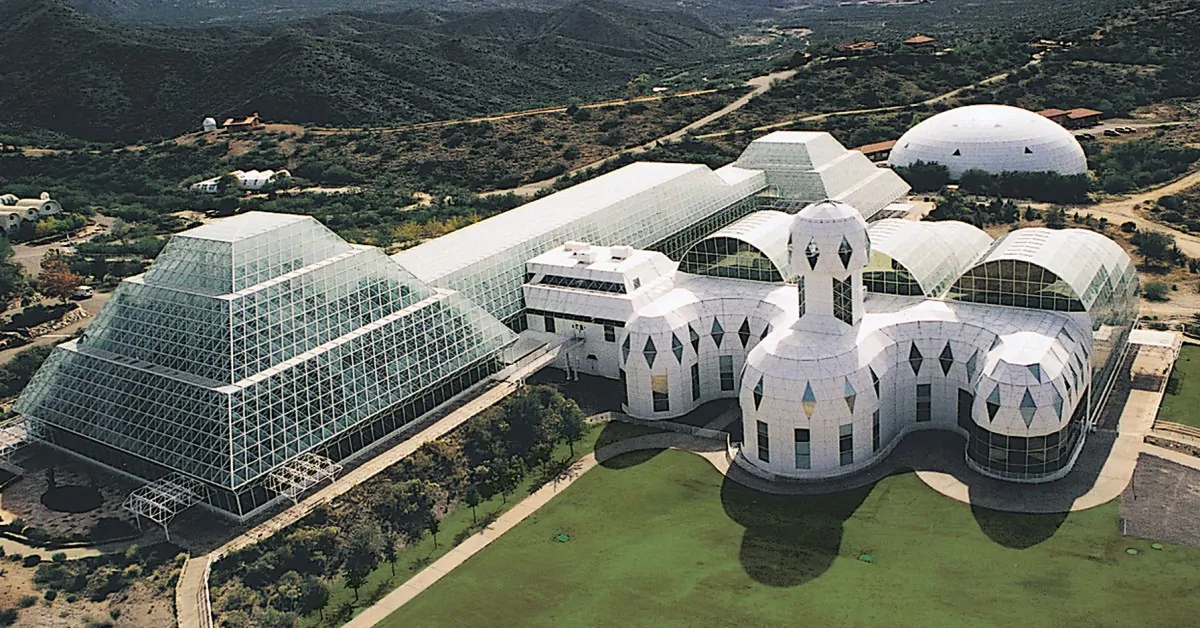From self-sustaining experiment to scientific powerhouse
Located in Arizona’s Sonoran Desert, Biosphere 2 is a 3.14-acre glass structure housing multiple simulated ecosystems. Originally built in the late 1980s to test whether humans could survive in a closed, self-sufficient system, the facility has since shifted focus toward scientific research.
Following its initial missions — one of which lasted two years with eight individuals sealed inside — Biosphere 2 was transferred to academic institutions and is now operated by the University of Arizona. The research conducted here aims to understand how ecosystems respond to environmental changes, particularly those driven by human activity.
Simulated biomes supporting diverse research
Rainforest and tropical crop resilience
Inside the glass dome, a dense rainforest allows scientists to study how coffee and cacao trees respond to rising temperatures. With heat reaching up to 140°F (60°C) near the canopy, researchers monitor plant stress and development using advanced sensors.
Artificial ocean and coral restoration
The 700,000-gallon ocean habitat within Biosphere 2 includes a manmade reef structure and supports studies on coral recovery. Coral Reef Arks, suspended PVC domes, provide platforms for coral growth in preparation for reseeding bleached reefs.
Landscape Evolution Observatory (LEO)
LEO features three massive trays filled with basalt rock and a rainfall system. It simulates how watersheds evolve under varying environmental conditions, from microbial activity to plant colonization. The project contributes insights into soil regeneration and hydrological resilience.
Sustainable innovation and future-focused science
Beyond the enclosed habitats, Biosphere 2 supports agrovoltaic experiments — growing crops beneath solar panels — demonstrating mutually beneficial energy and agriculture solutions. The site also explores long-term habitation prospects on other planets and houses a radio telescope.
With over 3 million visitors since 1991, Biosphere 2 continues to inspire and inform. It serves as a unique platform for addressing the challenges facing Earth — affectionately known to its researchers as “Biosphere 1.”







